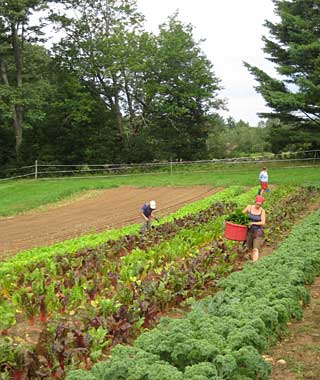 |
| USDA Certified Organic |
Since Sabrina's Crossing debuted last September, I have tried to share the information I have come across, and find important, about the state of the American food supply.
Because of the presence of GMOs, pesticides, anti-biotics, hormones, chemicals, and so on, our food supply has come to resemble something of a disaster. In attempt to avoid as many of these harmful things listed above, I buy organic food whenever possible. But you know what -- it's expensive, isn't it?!
(side note: this isn't intended to be a 'why you should eat organic' blog. I've already done those: Do You Know What GMOs Are?, The Effects of GMOs, The Harmful Effects of Soy, What Can We Do About GMOs?)
Money Spent on Food versus Health Care
Here is something to chew on as you think about the importance of the quality of our food: in the 1960s, 18% of our yearly income was spent on food, while only 5% was spent on health care. Today we spend 9% on food, and 17% on health care. Staggering numbers if you ask me.
We cannot compare our diets to those from prior generations. Food in the 1950s didn't have meat and dairy filled with hormones and anti-biotics. Fruits didn't have multiple pesticides on them, and there were no GMOs.
Somewhere along the line, we were conditioned to think that food should be cheap.
The cheaper it is, the better. $1 for a cheeseburger? Awesome, right? Cheap food/fast food is essentially processed garbage.
Let's look at it this way: would you rather pay a few extra dollars for high-quality food now? Or pay even more a little further down the line in the form of visits to the doctor and medication?
 |
| High pesticide versus low pesticide produce. |
If eating healthier foods is a priority for you, hopefully today's blog will give you a few ideas on how to scrape up a few extra dollars for those all-important groceries!
Prioritize: the Dirty Dozen & the Clean 15
The first thing you can do is prioritize what you buy as organic.
Always avoid the 'dirty dozen' (thin skinned fruits & vegetables: Apples, Celery, Peaches, Strawberries, Domestic blueberries, Nectarines, Sweet bell peppers. Spinach, kale and collard greens, Cherries, Potatoes, Imported grapes, and Lettuce). Those things should ALWAYS be bought organically because of the high amount of pesticides and toxins found on them.
The 'Clean 15' are fruits and vegetables with thick rinds/skins that don't necessarily need to be bought organically (Onions, Avocados, Sweet corn, Pineapples, Mango, Sweet peas, Asparagus, Kiwi fruit, Cabbage, Eggplant, Cantaloupe, Watermelon, Grapefruit, Sweet potatoes, and Sweet onions).
Re-think Our Budgets
The second thing we can do is re-prioritize our budgets:
-Stop buying magazines, and read your 'news' online.
-Stop buying $4 lattes three times a week (this one's tough, I know!). Brew your coffee at home!
-Stop buying pop/soda (whatever you call it in your neck of the woods!) and bottled water!
-Cut down the number of times you eat out per week. Restaurants are expensive!
-Buy frozen fruits and veggies (these can actually be more nutritious because the foods aren't oxidizing/aging, and thus losing nutrients).
-You don't need to eat meat every day! Limit the amount of meat you eat, so the meat you do consume is organic.
What other ways can we change our spending habits?
Buy Local
Thirdly, buy fruits and vegetables that are in season (also known as buying local!). It costs a great deal of money to ship foods across the country, and even more from South America, so those shipping costs are passed onto the consumer. By buying local, those shipping costs are taken out of the equation.
CSAs & Gardens
Obviously you can grow your own vegetables. I understand that takes significant effort, but it's an option.
You can also go to your local farmers' market or join a CSA (Community Supported Agriculture - which I will be doing a blog on in the future). To locate CSAs and farmer's markets in your area, go to: www.localharvest.org.
Compare
Lastly, compare prices! Don't just go to Whole Foods and buy up all the organic produce you can find.
Compare which stores have the cheapest apples, or the best deals on your favorite foods. Trader Joe's is an awesome option, and lots of times the 'big box' stores (Safeway, etc) have various organics on sale. We just have to be diligent and pay more attention!
For those of you that say that organic food is too expensive, try re-prioritizing your budgets for a while, and see how it works out! As you can see, there are A LOT of things we can do, we just have to make it a priority!
LINKS:




0 comments:
Post a Comment